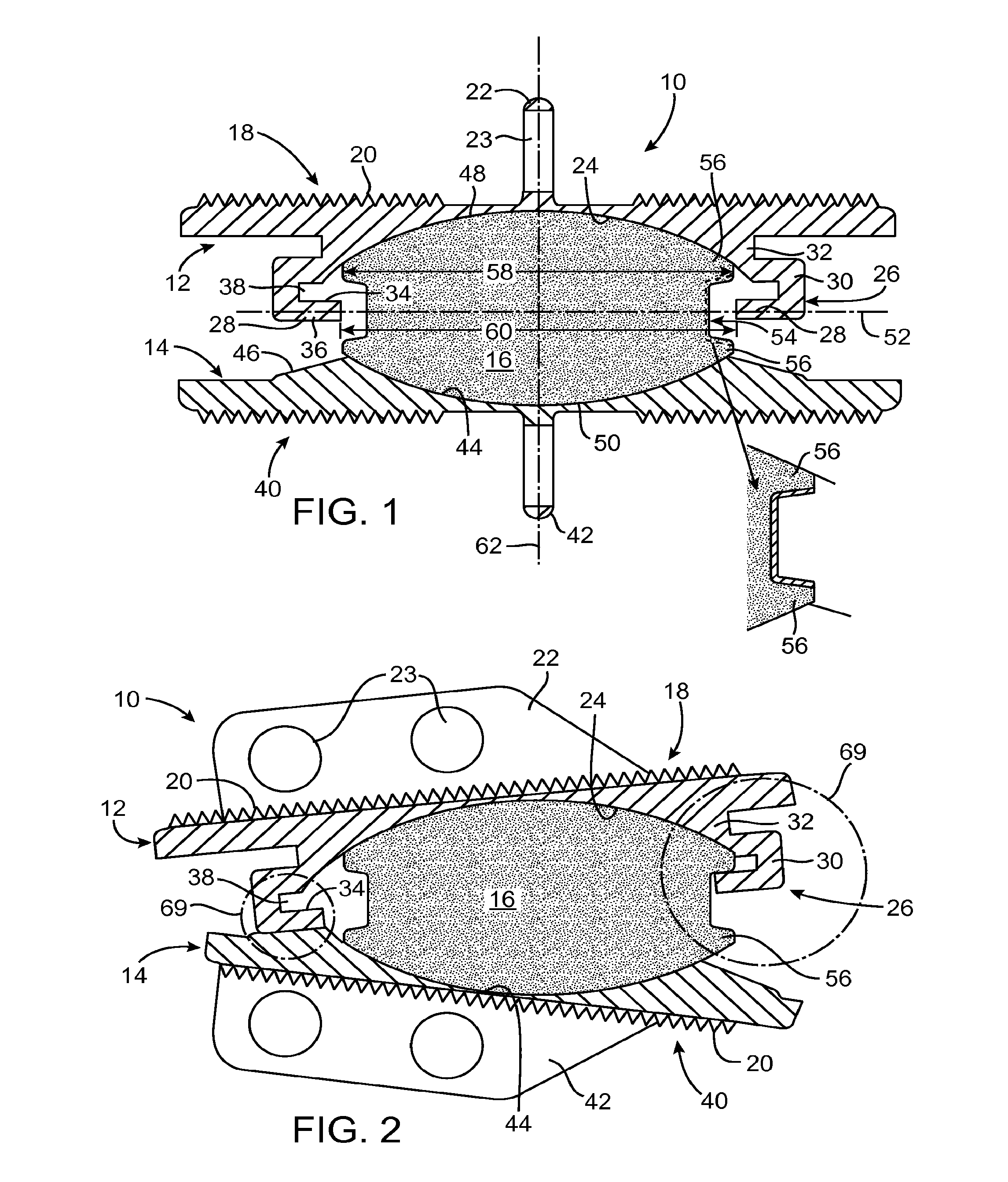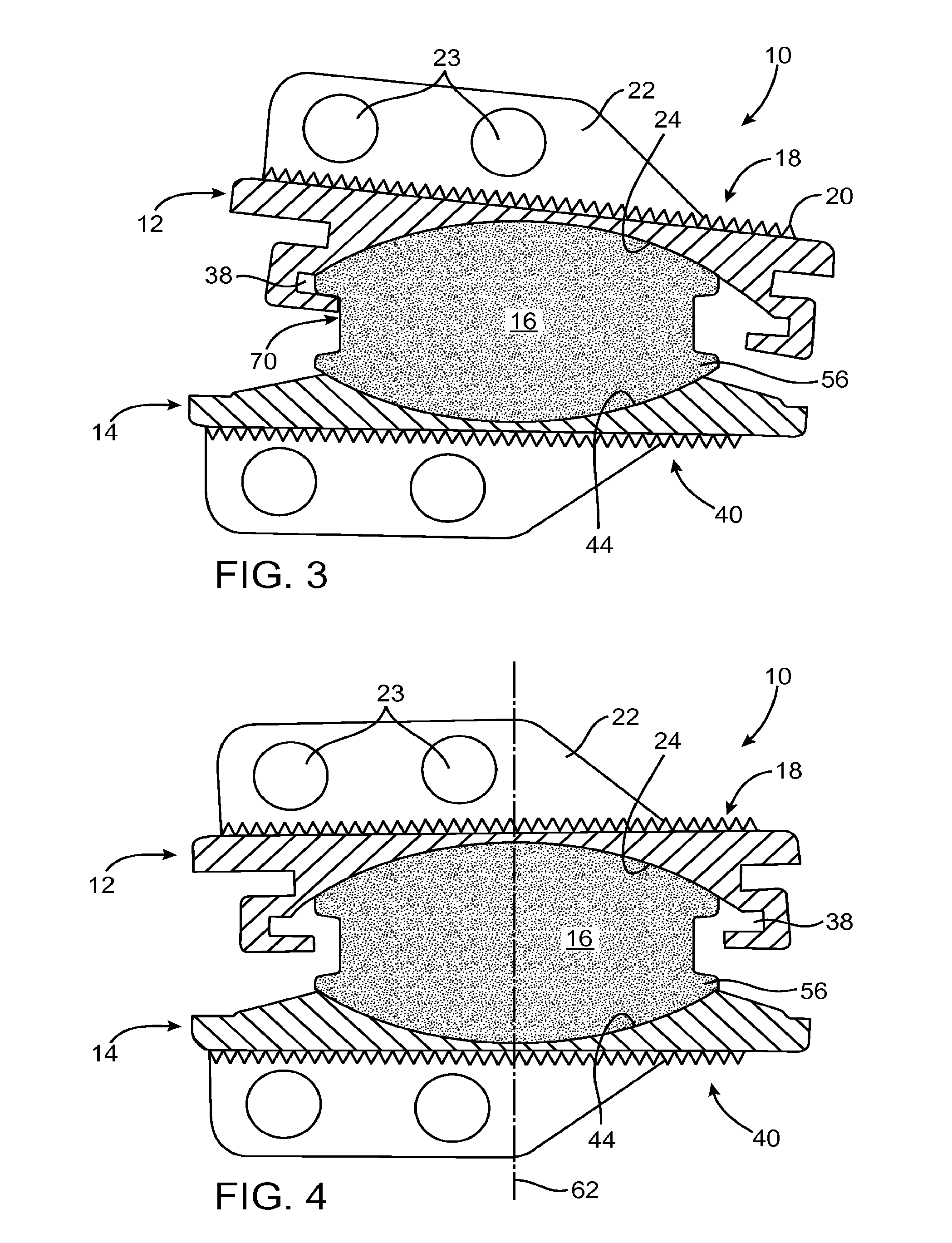Prosthetic disc for intervertebral insertion
a technology of prosthesis and disc, applied in the field of medical devices and methods, can solve the problem that the movement of the core relative to the plate will preferably be unconstrained, and achieve the effect of low friction
- Summary
- Abstract
- Description
- Claims
- Application Information
AI Technical Summary
Benefits of technology
Problems solved by technology
Method used
Image
Examples
Embodiment Construction
[0030]FIGS. 1 to 4 illustrate a prosthetic disc 10 for intervertebral insertion between two adjacent spinal vertebrae (not shown). The disc 10 comprises three components, namely an upper plate or shell 12, a lower plate or shell 14 and a core 16 located between the plates.
[0031]The upper plate 12 includes an outer surface 18 and an inner surface 24 and may be constructed from any suitable material or combination of materials, such as but not limited to cobalt chrome molybdenum, titanium (such as grade 5 titanium) and / or the like. In one embodiment, typically used in the lumbar spine, the upper plate 12 is constructed of cobalt chrome molybdenum, and the outer surface 18 is treated with aluminum oxide blasting followed by a titanium plasma spray. In another embodiment, typically used in the cervical spine, the upper plate 12 is constructed of titanium, the inner surface 24 is coated with titanium nitride, and the outer surface 18 is treated with aluminum oxide blasting. An alternativ...
PUM
 Login to View More
Login to View More Abstract
Description
Claims
Application Information
 Login to View More
Login to View More - R&D
- Intellectual Property
- Life Sciences
- Materials
- Tech Scout
- Unparalleled Data Quality
- Higher Quality Content
- 60% Fewer Hallucinations
Browse by: Latest US Patents, China's latest patents, Technical Efficacy Thesaurus, Application Domain, Technology Topic, Popular Technical Reports.
© 2025 PatSnap. All rights reserved.Legal|Privacy policy|Modern Slavery Act Transparency Statement|Sitemap|About US| Contact US: help@patsnap.com



